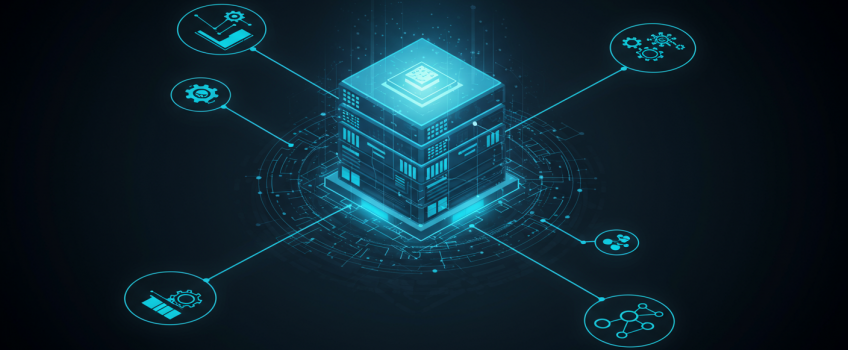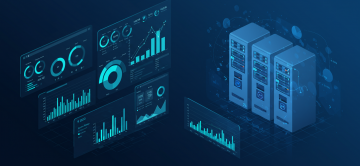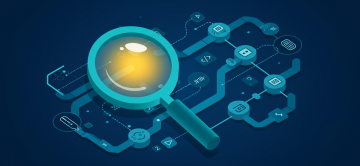Mastering Apache Kafka: The Definitive Guide

Mastering Apache Kafka: The Definitive Guide
Apache Kafka has become the de-facto standard for building real-time data pipelines and the central nervous system of the modern, data-driven enterprise. Its ability to handle high-throughput, low-latency data streams has made it an essential component for everything from microservices communication to large-scale IoT data ingestion and real-time AI.
But Kafka's power comes with complexity. True mastery is a journey that spans from understanding core concepts to designing complex architectures, tuning for extreme performance, and aligning its capabilities with strategic business goals. This guide is your definitive roadmap. At ActiveWizards, we've distilled our deep expertise in data engineering and advanced AI into a comprehensive set of resources to guide you at every step. Bookmark this page—it's your one-stop hub for mastering Kafka.
Your Path to Kafka Mastery
- Part 1: The Foundations - Start with the core building blocks.
- Part 2: Practical Implementation - Learn to build with the Kafka ecosystem.
- Part 3: Production Operations & Reliability - Run your cluster with confidence.
- Part 4: Performance & Optimization - Squeeze every ounce of performance from your setup.
- Part 5: Strategy & Business Value - Align Kafka with your organizational goals.
Part 1: The Foundations - Core Concepts & Architecture
Before you can run, you must learn to walk. This section covers the fundamental principles of Kafka. A solid grasp of these concepts is non-negotiable for anyone building or operating a Kafka-based system.
The Definitive Guide to Apache Kafka
This is ground zero. We break down the essential components—brokers, topics, partitions, and the commit log—and explain how they work together to create a durable, scalable streaming platform. Complete with code examples, this is the perfect starting point.
Kafka Topic and Partition Strategy
How you structure your topics and partitions is one of the most critical architectural decisions you'll make. This deep dive explores the trade-offs, the importance of keying strategies, and how to design for both current needs and future scale.
Understanding Kafka Producers and Consumers
Data gets into Kafka via producers and out via consumers. This guide covers the best practices for configuring both, including delivery semantics (at-least-once, at-most-once), batching, and consumer group management for reliable data streaming.
Part 2: Practical Implementation - Building with the Kafka Ecosystem
Kafka's true power is unlocked through its rich ecosystem. These guides provide practical, step-by-step instructions for leveraging key components to build robust, real-time applications.
A Practical Guide to Kafka Connect
Stop writing custom ingestion code. Kafka Connect provides a scalable framework for streaming data into and out of Kafka. This guide shows you how to use source and sink connectors to integrate with databases, files, and APIs with configuration, not code.
Building with Kafka Streams and ksqlDB
Process your data as it arrives. We walk you through building stateful stream processing applications using the Kafka Streams Java library and its declarative SQL interface, ksqlDB. This is the key to real-time analytics and data enrichment.
The Importance of Schema Registry
A data hub without governance is a data swamp. This article explains why Schema Registry is a critical component for ensuring data quality, preventing breaking changes, and enabling safe schema evolution using formats like Avro and Protobuf.
Achieving Exactly-Once Semantics (EOS)
For mission-critical applications like financial processing, preventing data duplication or loss is paramount. This practical guide demystifies EOS, explaining how idempotency and transactions work in Kafka to guarantee data integrity from end to end.
Many teams start with just the Kafka brokers and plan to add components like Connect and Schema Registry "later." This is a strategic mistake. Architecting your system around the full ecosystem from day one prevents technical debt and establishes best practices for governance and integration that will save you countless hours down the road. Treat Kafka as a platform, not just a message queue.
Part 3: Production Operations & Reliability
Deploying Kafka is one thing; keeping it running, healthy, and resilient is another. This section is dedicated to the operational excellence required for mission-critical deployments.
Kafka Monitoring Essentials
You can't manage what you can't see. We outline the key metrics you must monitor across brokers, producers, and consumers—from ISR shrink to consumer lag—and discuss the tools you can use to build a comprehensive monitoring dashboard.
Troubleshooting Complex Kafka Production Issues
When things go wrong at 3 AM, a methodical approach is crucial. This consultant's checklist provides a diagnostic framework for tackling common and complex production issues, helping you isolate problems and restore service quickly.
Disaster Recovery and High Availability Strategies
How do you survive a datacenter failure? This guide covers the strategies and tools, such as Kafka's own MirrorMaker 2, for building a highly available and geo-replicated deployment that can withstand major outages.
Part 4: Performance & Optimization
For the most demanding use cases, default configurations aren't enough. This advanced section is for engineers looking to tune Kafka for ultra-low latency, extreme throughput, and maximum efficiency.
Unlocking Kafka's Full Potential: Advanced Performance Tuning
Go deep into the internals of Kafka performance. We cover advanced topics like JVM tuning, OS-level optimizations, broker configurations for I/O, and network settings to build a truly high-performance cluster.
15 Actionable Tips for Optimizing Kafka Performance
Looking for quick wins? This article provides a list of 15 actionable, high-impact tips that go beyond the basics to help you improve the performance and efficiency of your existing Kafka cluster.
Benchmarking Your Kafka Cluster
Before you tune, you must measure. This guide details the proper methodologies and open-source tools for benchmarking your cluster, allowing you to validate your configuration, understand your limits, and make data-driven optimization decisions.
Part 5: Strategy & Business Value
Technology for its own sake provides little value. This final section elevates the conversation to the strategic level, focusing on how to justify, plan, and leverage Kafka to drive real business outcomes.
Migrating to Kafka from Legacy Messaging Systems
Modernization is a common driver for Kafka adoption. We provide a strategic roadmap for successfully migrating from legacy systems like IBM MQ or Tibco, covering planning, data migration strategies, and avoiding common pitfalls.
The True Cost of Self-Managing Kafka
The "free" open-source software is only the tip of the iceberg. This essential read for decision-makers breaks down the hidden operational costs of running Kafka yourself and provides a framework for evaluating when expert consulting or managed services offer a superior ROI.
Building a Future-Proof Streaming Data Hub
This is the ultimate vision: Kafka as the central nervous system of your enterprise. We lay out the architectural blueprint for a hub that integrates IoT, microservices, and real-time AI, creating a scalable and future-proof data foundation.
Engineer Intelligence with ActiveWizards
This guide provides the roadmap, but every journey is unique. Whether you are architecting a new data hub, tuning a mission-critical cluster, or need a 24/7 managed service, our expert team is here to accelerate your success with Kafka. We engineer advanced AI and data platforms that drive business value.



Comments (0)
Add a new comment: